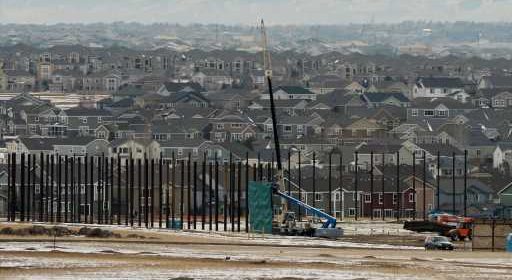Harvard study says tighter oil, gas rules that allow exemptions make little difference

A new study that looks at Pennsylvania’s rules for locating oil and wells, and which notes Colorado’s new regulations, found that the distance between buildings and wells didn’t significantly change when the rules were tightened because exemptions were allowed.
The study by Harvard University’s T. H. Chan’s School of Public Health, the research institute Physicians, Scientists and Engineers for Healthy Energy and others reviewed the effects of Pennsylvania’s 2012 law that said oil and gas wells have to be set back at least 500 feet from buildings. It found that through 2018, one out of every 13.7 unconventional natural gas wells was within 500 feet of buildings.
“The high-level, take-home message here is just because the state of Pennsylvania passed a setback regulation of 500 feet, it didn’t mean that zero wells were going to get drilled within 500 feet of buildings,” said the study’s lead author, Drew Michanowicz, who was a visiting scientist at Harvard.
Michanowicz, now at Physcians, Scientists and Engineers for Healthy Energy, said the study is the first to systematically track the effects of setback rules. New 2,000-foot setbacks took effect in January in Colorado as part of a sweeping overhaul of the state’s oil and gas rules that was mandated by a 2019 state law.
Colorado’s setbacks are considered the strictest in the country and are seen by the industry as a drag on development.
“I followed Colorado’s setback rule-making process very closely, and I think it’s going to be really interesting to see what is the overall effectiveness or adherence to setback regulations because we know exemption pathways exist, variances can be obtained by operators,” Michanowicz said.
The study acknowledges differences between the exemptions allowed by Pennsylvania and Colorado. Pennsylvania exempts new wells drilled on well sites that predate the 2012 law. Researchers estimate that about 35% of the wells drilled within the 500-foot setback were on well pads established before the law took effect. Most pads have multiple wells.
Colorado Rising for Communities spoke against variances because it believed they could be abused to undermine safeguards, Joe Salazar, a former legislator and the environmental group’s executive director, said in an email.
“The Harvard study demonstrates the absurdity of setback regulations when exemptions and variances are available,” Salazar said
But Jeff Robbins, chairman of the Colorado Oil and Gas Conservation Commission, said he was pleased by the study’s recommendations that exemptions should be reviewed and protections should be added for health and safety where warranted.
“I was actually pleased to see that the siting requirements we’ve developed in the state of Colorado are very much in line with this approach,” Robbins said.
Colorado allows exemptions when the wells are part of an approved comprehensive drilling plan; the property owner or tenants sign a waiver; equipment producing the most noise and emissions is more than 2,000 feet from buildings; and the commission finds that companies have taken “substantially equivalent” protections for public health and safety.
Exemptions, or offramps, as the COGCC calls them, will be allowed only after a public hearing before the commission, Robbins said. Permits previously were approved by the COGCC director unless a public hearing was held for a particular reason.
Robbins said it appears that companies in Pennsylvania can obtain permits for new wells that don’t follow the setback distance as long as the well pad where it is drilled was established before the setback law. “That’s not the case in Colorado,” he said.
However, new well sites whose permits were approved but not drilled before Jan. 15, when Colorado’s new rules took effect, don’t have to meet the 2,000-foot setback. Several of those permits are moving through the system, spurring numerous complaints from neighbors.
Robbins said the wells will still have to meet other new rules intended to protect public health, including regulations on air quality and water monitoring and noise levels.
Lynn Granger, executive director of the American Petroleum Institute-Colorado, said the Harvard study results don’t seem to apply Colorado. She said Colorado’s setback requirements followed comprehensive discussions and provide for specific variances.
“It is far too early to speculate as to the frequency of their application, as relatively few permits have been filed with the COGCC since the new rules became active in January,” Granger said.
Months of hearings and testimony failed to produce evidence that setbacks beyond 500 feet were necessary, said Dan Haley, president of the Colorado Oil and Gas Association. “We’re hopeful the commissioners’ judgement will continue to be based on what is necessary and reasonable, rather than just the precautionary principle.”
Source: Read Full Article
